En matière d'usinage et d'outillage, la précision est essentielle. Les plaquettes en carbure constituent l'un des éléments les plus importants sur lesquels les machinistes s'appuient. En particulier, les plaquettes triangulaires en carbure sont largement utilisées en raison de leur polyvalence et de leur efficacité. Si vous souhaitez approfondir vos connaissances sur ces outils, vous êtes au bon endroit. Ce guide complet aborde tout ce que vous devez savoir sur les sujets suivants taille des plaquettes en carbure de tungstèneIl comprend des descriptions détaillées de modèles spécifiques de poudres métalliques, de leurs applications, des propriétés des matériaux, et bien plus encore.
Vue d'ensemble des tailles de plaquettes en carbure de Triangle
Les plaquettes en carbure triangulaires sont des outils de coupe de forme triangulaire généralement utilisés dans les opérations de fraisage et de tournage. Leur forme permet d'obtenir plusieurs arêtes de coupe, ce qui accroît l'efficacité et la longévité. Le choix de la taille et du type de plaquette dépend des exigences spécifiques de l'opération d'usinage, telles que le matériau usiné et la finition souhaitée.
Principales caractéristiques des plaquettes en carbure triangulaire
- Polyvalence : Convient à diverses opérations d'usinage.
- Durabilité : Fabriqués à partir de matériaux en carbure résistants aux températures élevées et à l'usure.
- Efficacité : Les arêtes de coupe multiples réduisent la nécessité de changer fréquemment d'outil.
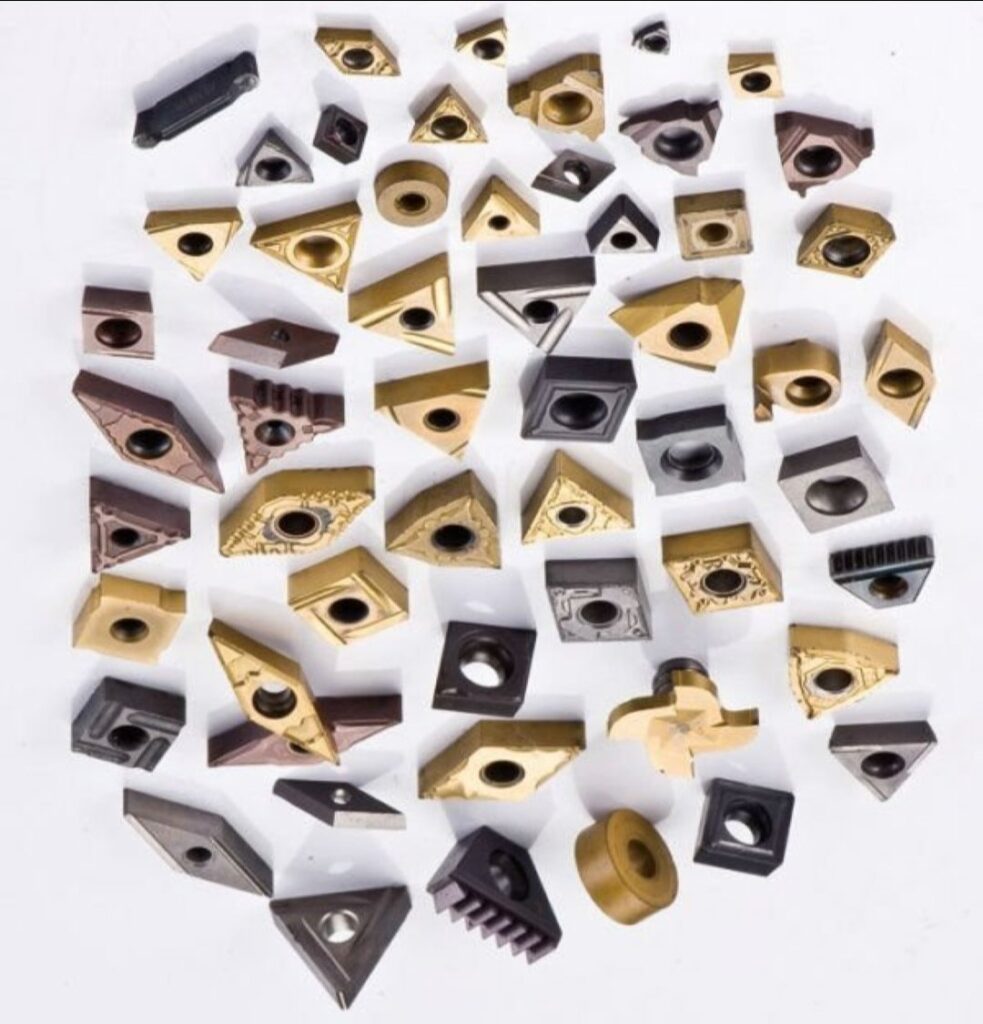
Dimensions et types de plaquettes en carbure triangulaire
Les plaquettes en carbure Triangle existent en différentes tailles et différents types, chacun étant adapté à des applications spécifiques. Nous énumérons et décrivons ici quelques-uns des modèles les plus courants :
| Modèle | Taille (mm) | Application | Caractéristiques |
|---|---|---|---|
| TNMG 160404 | 16x04x04 | Tournage général | Haute résistance à l'usure, adaptée à l'acier et à la fonte |
| TCGT 110302 | 11x03x02 | Opérations de finition | Arête tranchante, excellent état de surface |
| TPMR 090304 | 09x03x04 | Usinage de précision | Haute précision, vibrations minimales |
| TNMG 220408 | 22x04x08 | Tournage robuste | Robuste, idéal pour les coupes interrompues |
| TPGH 160304 | 16x03x04 | Usinage de l'aluminium | Surface polie, réduisant les bords arrondis |
| TNMA 160408 | 16x04x08 | Opérations d'ébauche | Ténacité élevée, convient à l'ébauche |
| TCMT 090204 | 09x02x04 | Usinage léger | Polyvalent, convient aux travaux légers à moyens |
| TPGT 110302 | 11x03x02 | Finition | Finition de précision, arête de coupe tranchante |
| TNMG 331 | 3/8″ IC | Coupe lourde | Grande durabilité, excellent pour l'usinage lourd |
| TPMT 160304 | 16x03x04 | Semi-finition | Des performances équilibrées pour la semi-finition |
Applications de la Dimensions des plaquettes en carbure Triangle
Les plaquettes en carbure Triangle sont conçues pour une large gamme d'applications. Le tableau ci-dessous présente les principales utilisations des différentes tailles :
| Application | Taille de l'insert | Matériaux |
|---|---|---|
| Tournage général | TNMG 160404 | Acier, fonte |
| Finition | TCGT 110302 | Acier inoxydable, aluminium |
| Usinage de précision | TPMR 090304 | Acier trempé |
| Tournage robuste | TNMG 220408 | Acier allié, alliages à haute température |
| Usinage de l'aluminium | TPGH 160304 | Alliages d'aluminium |
| Dégrossissage | TNMA 160408 | Fonte, acier |
| Usinage léger | TCMT 090204 | Métaux non ferreux |
| Semi-finition | TPMT 160304 | Divers alliages |
Propriétés des matériaux des plaquettes en carbure triangulaire
Les performances des plaquettes en carbure de tungstène sont largement déterminées par les propriétés du matériau. Le tableau suivant résume ces propriétés :
| Propriété | Description |
|---|---|
| Dureté | Dureté élevée pour la résistance à l'usure |
| Solidité | Capacité à résister aux chocs et à éviter les éclats |
| Résistance à la chaleur | Stabilité à des températures de coupe élevées |
| Stabilité chimique | Résistance à l'oxydation et à l'usure chimique |
| Conductivité thermique | Dissipation efficace de la chaleur pendant la coupe |
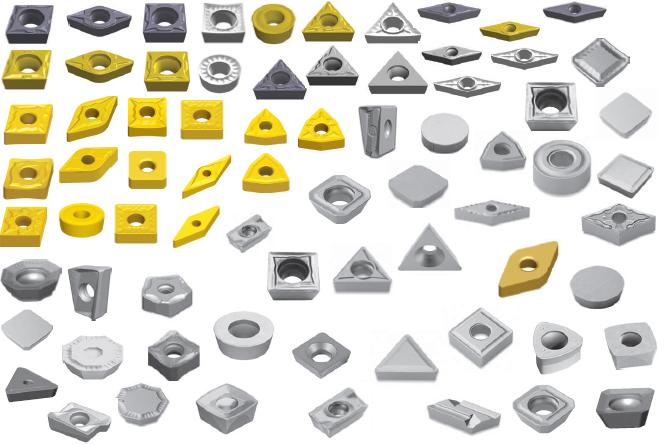
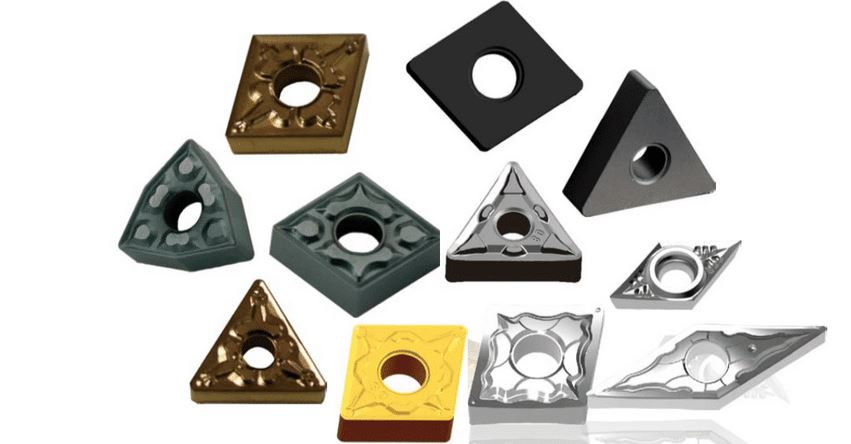


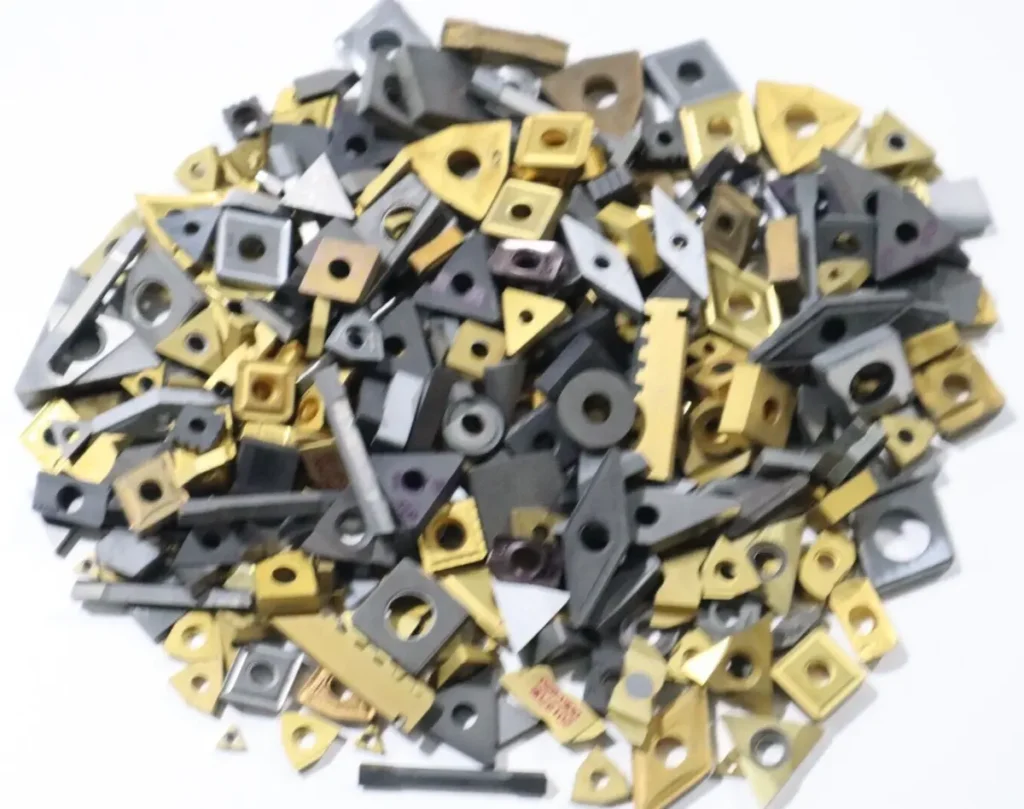
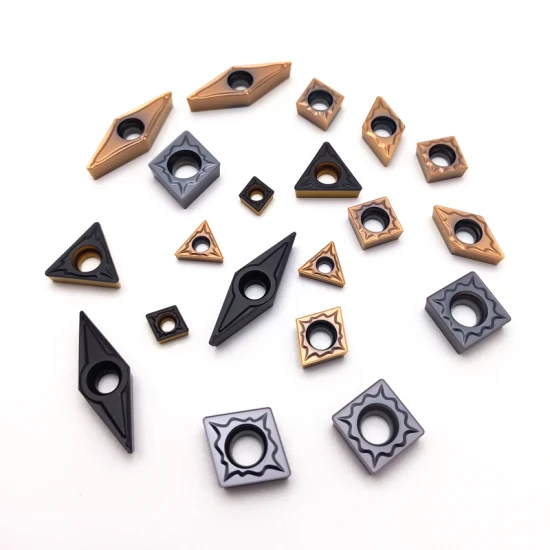
Composition et caractéristiques
Les plaquettes en carbure sont fabriquées à partir d'un matériau composite composé d'une phase dure (carbures) et d'un métal liant (généralement du cobalt). Cette composition leur confère des propriétés uniques :
| Composant | Propriétés |
|---|---|
| Carbure de tungstène (WC) | Dureté élevée, résistance à l'usure |
| Cobalt (Co) | Assure la robustesse et la solidité |
| Carbure de titane (TiC) | Améliore la résistance à la chaleur et la stabilité chimique |
| Carbure de tantale (TaC) | Améliore la ténacité et la résistance aux chocs thermiques |
Dureté, solidité et résistance à l'usure
Différentes nuances de carbure sont utilisées pour atteindre des niveaux spécifiques de dureté, de résistance et de résistance à l'usure. Le tableau ci-dessous compare ces propriétés pour les nuances de carbure les plus courantes :
| Grade | Dureté (HRA) | Résistance à la rupture transversale (MPa) | Résistance à l'usure |
|---|---|---|---|
| C2 | 89.5 | 2500 | Haut |
| C3 | 91.0 | 2300 | Très élevé |
| C4 | 92.5 | 2100 | Extrême |
| C5 | 88.0 | 2800 | Moyen |
| C6 | 90.0 | 2600 | Haut |
Spécifications et normes
Les plaquettes en carbure répondent à des normes et spécifications spécifiques afin de garantir leur compatibilité et leurs performances. Voici un tableau détaillant ces aspects :
| Standard | Spécifications | Détails |
|---|---|---|
| ISO | ISO 1832 | Norme internationale pour les plaquettes en carbure |
| ANSI | ANSI B212.4 | Norme américaine pour les formes et les dimensions des plaquettes en carbure |
| DIN | DIN 4987 | Norme allemande pour les plaquettes en carbure |
| JIS | JIS B4125 | Norme japonaise pour les plaquettes en carbure |
Fournisseurs et prix
Il est essentiel de comprendre le marché et de s'approvisionner auprès de fournisseurs fiables. Voici quelques fournisseurs connus et une idée générale des prix :
| Fournisseur | Localisation | Fourchette de prix (par pièce) |
|---|---|---|
| Sandvik Coromant | Mondial | $10 – $50 |
| Kennametal | Mondial | $15 – $55 |
| Matériaux Mitsubishi | Mondial | $12 – $45 |
| ISCAR | Mondial | $20 – $60 |
| Sumitomo Electric | Mondial | $18 – $52 |
Sélection de la bonne taille de plaquette en carbure triangulaire
Pour choisir la bonne taille de plaquette, il faut tenir compte de plusieurs facteurs, tels que la matière à usiner, le type d'opération et la finition souhaitée. Voici un guide pour vous aider à sélectionner la plaquette appropriée :
| Facteur | Considération | Taille recommandée |
|---|---|---|
| Matériau Dureté | Les matériaux durs nécessitent des plaquettes plus résistantes | C2, C4 |
| Type d'opération | Dégrossissage et finition | TNMA pour l'ébauche, TCGT pour la finition |
| Finition souhaitée | Précision et qualité de surface | TPMR pour la précision, TPGH pour les finitions lisses |
| Puissance de la machine | Machines de forte puissance ou de faible puissance | Plus grande taille pour une puissance élevée, plus petite pour une faible puissance |
Avantages et limites des plaquettes en carbure triangulaire
Lors du choix des outils, il est essentiel de peser le pour et le contre. Voici une comparaison des avantages et des limites des plaquettes triangulaires en carbure :
| Aspect | Avantages | Limites |
|---|---|---|
| Polyvalence | Adapté à diverses opérations | Peut nécessiter des changements fréquents pour des tâches spécialisées |
| Durabilité | Haute résistance à l'usure | Coût initial élevé |
| Efficacité | Plusieurs arêtes de coupe | Nécessite un réglage de précision |
| Performance | Finition de haute qualité constante | Limité à des matériaux et opérations spécifiques |

FAQ
| Question | Réponse |
|---|---|
| À quoi servent les plaquettes en carbure de tungstène ? | Ils sont utilisés pour les opérations de tournage, de fraisage et d'usinage de précision. |
| Pourquoi les plaquettes en carbure sont-elles préférées ? | En raison de leur grande dureté, de leur résistance à l'usure et de leur capacité à conserver un bord tranchant. |
| Comment choisir la bonne plaquette carbure ? | Tenez compte du matériau, du type d'opération et de la finition souhaitée. Reportez-vous au guide de sélection ci-dessus. |
| Les plaquettes en carbure sont-elles chères ? | Ils peuvent être plus coûteux au départ mais offrent une durée de vie plus longue et de meilleures performances. |
| Quelles sont les normes communes pour les plaquettes en carbure ? | Normes ISO, ANSI, DIN et JIS. |
Conclusion
Comprendre taille des plaquettes en carbure de tungstène est essentiel pour optimiser vos opérations d'usinage. En choisissant la bonne taille et le bon type de plaquette, vous pouvez améliorer l'efficacité, réduire les temps d'arrêt et obtenir des résultats supérieurs. Que vous soyez un machiniste chevronné ou un débutant, ce guide vous fournit les informations nécessaires pour prendre des décisions éclairées concernant vos choix d'outils.




